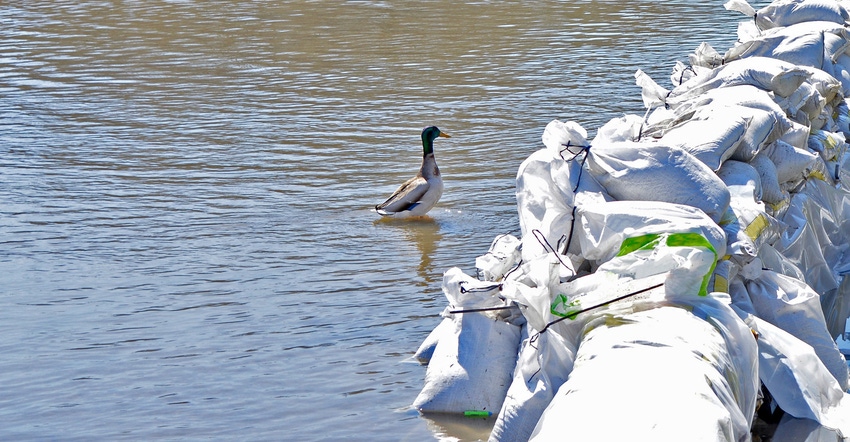June 12, 2019

Flooding across Oklahoma has been devastating for state residents. Flood waters have taken their toll on homes and businesses, but the wildlife population also has been affected.
Dwayne Elmore, Oklahoma State University Cooperative Extension wildlife specialist and Bollenbach Chair in OSU’s Department of Natural Resource Ecology and Management, said flooding has affected most all aspects of wildlife.
See, Cattle producers should examine animals for signs of foot rot
“While flooding has been detrimental to our state’s residents, some of our wildlife populations have been aided by all the extra water,” Elmore said. “Amphibians such as frogs will benefit from the heavy rains due to prolonged standing water in ponds and wetlands, which allows time for larvae to mature. Aquatic turtles also have been helped with the additional habitat that has been created. Unfortunately, the flip side to this is road mortality has been high in some areas due to increased turtle movement. Watch for increased numbers of turtles on the roads and avoid hitting them when possible.”
Flooding can be a boon or burden to fish populations. Flood waters can create important fish habitat and many fish benefit when the rivers run high. However, too much water at the wrong time can destroy fish nests, and fish also can get stranded once flood waters recede.
One group of wildlife that has been hit hard in the 2019 flood is ground-nesting birds. Expect large declines in wild turkey in many areas of the state, which will have a big impact on turkey hunting season for the next couple of years.
Elmore also said that although quail have been delayed in nesting, there is still time for them to have decent production this year.
“I don’t see much of an impact on the deer population due to flooding,” he said. “There may have been a few fawns lost, but the majority of the flooding occurred before most fawns were on the ground.”
One of the positive aspects of the excess water found in much of the state is the impact it has on vegetation. The vegetation is in great shape and will provide a lot of food resources for many species of wildlife throughout the summer months.
“Something else to consider is some wildlife has been displaced due to the flooding. Don’t be surprised to see wildlife in some unusual spots,” Elmore said.
Source: is OSU, which is solely responsible for the information provided and is wholly owned by the source. Informa Business Media and all its subsidiaries are not responsible for any of the content contained in this information asset.
You May Also Like




